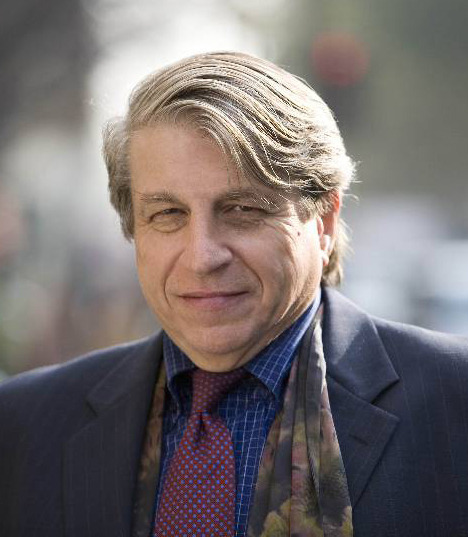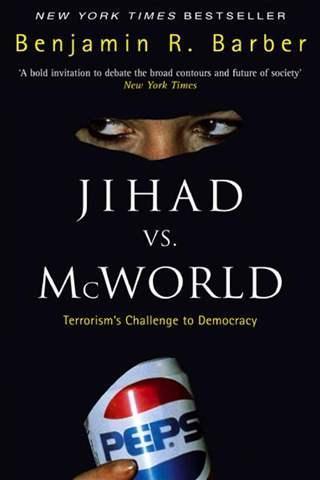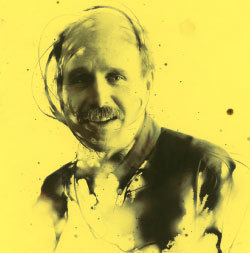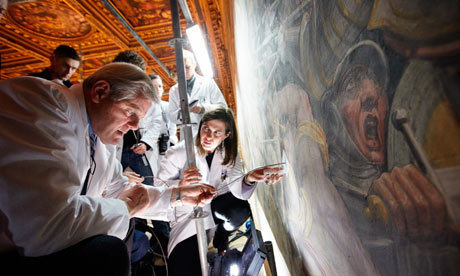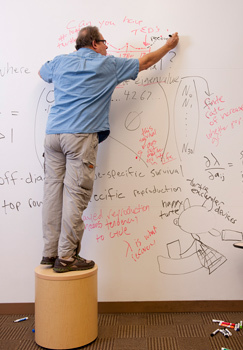Stewart Brand's Blog, page 88
May 30, 2012
How Toy Story 2 Narrowly Escaped Oblivion
Have you ever accidentally dropped something out of your pocket while the toilet is flushing? That’s R-M-*.
Those three little characters are more dangerous than they might look: they very nearly spelled the end of Woody, Buzz Lightyear, and Mr. Potato Head. R-M-* erases Linux and Unix drives, and in 01999, someone accidentally ran this command on the machine that held the files for the soon-to-be-released Toy Story 2.
In this animated video, Pixar producer Galyn Susman and former CTO Oren Jacob tell the story of how they nearly lost their movie, and finally managed to recover it:
Luckily, this story has a happy ending – but it’s a scary glimpse at how little stands between us and the digital dark age!
(via Kottke)

May 25, 2012
Barber Seminar Primer
Tuesday June 5, 02012 at the Cowell Theater, San Francisco
As the world congeals towards a single, globally interdependent economic and political system, being engaged as an individual can feel less and less meaningful. We’re told to “think globally, act locally,” but it can be very hard to imagine how one’s local actions have a global effect; and though we often say the world seems to be shrinking thanks to improvement in transportation and communications, being more aware of the rest of the world can also make it seem much larger, stranger, and beyond our control.
Benjamin Barber has spent a long career exploring how civil society – the public activities and efforts of citizens outside government – can and must sustain democracy in the face of this growing complexity. Though he’s generally known as a political scientist or a political theorist, Barber is less interested in politics than he is in governance and civics – the actual work of running a society.
In a 1992 article for The Atlantic, he sought to describe the principle forces threatening the spread of democracy (in his eyes, corporate capitalism and religious fundamentalism), later expanding the piece. Jihad vs. McWorld would become his most popular book partly because of its eerie prescience: it was published 6 years before religious fundamentalists attacked and destroyed the World Trade Center.
In his forthcoming book, If Mayors Ruled the World, Barber suggests that cities, one of our oldest forms of governance, offer a path forward into the new and unmapped terrain of a singular global system in need of human-scale feedback. Responsive and local while at the same time cosmopolitan and connected, cities may be even more effective than the relatively young nation-state at governing our world.
While sovereign nations often stress their independence, cities have more readily embraced interdependence. In support of those efforts, Barber helped start the non-profit CivWorld, a group that sponsors an annual Interdependence Day and, along with parent organization Demos, “advances new ideas to cope with a changing world that is faced with accelerating globalization, starker inequities between nations, growing human migration, and profound security and environmental threats.”
Benjamin Barber explains how cities offer the necessary leverage to address these issues on June 5th at the Cowell Theater. You can reserve tickets, get directions and sign up for the podcast on the Seminar page.
Subscribe to the Seminars About Long-term Thinking podcast for more thought-provoking programs.

Susan Freinkel Seminar Media
 This lecture was presented as part of The Long Now Foundation’s monthly Seminars About Long-term Thinking.
This lecture was presented as part of The Long Now Foundation’s monthly Seminars About Long-term Thinking.
Eternal Plastic: A Toxic Love Story
Tuesday May 22, 02012 – San Francisco
Audio is up on the Freinkel Seminar page, or you can subscribe to our podcast.
*********************
Making Plastic Even Better- a summary by Stewart Brand
Plastic is so new, Freinkel began, that among all the objects preserved in the sunken Titanic, none are synthetic plastic, because there was hardly any available in 1912. Natural plastic, however, was a familiar material. Amber was popular. Rubber was essential (all plant cellulose is made of long-chain polymers). Ivory for everything from billiard balls to piano keys was in such high demand that an 1867 paper warned about the looming extinction of elephants. The first synthetic plastic—celluoid—was developed as a substitute for ivory, and the elephants survived.
Bakelite was invented in 1907 to replace the beetle excretion called shellac (“It took 16,000 beetles six months to make a pound of shellac.”), and was first used to insulate electrical wiring. Soon there were sturdy Bakelite radios, telephones, ashtrays, and a thousand other things. The technology democratized consumption, because mass production made former luxury items cheap and attractive. The 1920s and ‘30s were a golden age of plastic innovation, with companies like Dow Chemical, DuPont, and I. G. Farben creating hundreds of new varieties of plastic for thrilled consumers. Cellophane became a cult. Nylons became a cult. A plastics trade show in 1946 had 87,000 members of the public lining up to view the wonders. New fabrics came along—Orlon and Dacron—as colorful as the deluge of plastic toys—Barbie, the Frisbee, Hula hoops, and Silly Putty.
Looking for new markets, the marketers discovered disposability—disposable cups for drink vending machines, disposable diapers (“Said to be responsible for the baby boom”), Bic lighters, soda bottles, medical syringes, and the infinite market of packaging. Americans consume 300 pounds of plastic a year. The variety of plastics we use are a problem for recycling, because they have to be sorted by hand. They all biodegrade eventually, but at varying rates. New bio-based polymers like “corn plastic” and “plant bottles” have less of a carbon footprint, but they biodegrade poorly. Meanwhile, thanks to the efficiencies of fracking, the price of natural gas feedstock is plummeting, and so is the price of plastic manufacture.
Some plastics have some chemicals like bisphenol A and phthalates that are toxic. American manufacturers don’t have to list the materials in their products, and there’s no hope of testing every one of the 80,000 industrialized chemicals loose in the world. Freinkel recommends greatly expanding the practice of “green chemistry,” so that every process and product of manufacturing is safe and sustainable from the ground up. She would like to see a stronger regulatory environment and the building of a fully systemic recycling infrastructure.
In the Q & A Freinkel recommended a book by Elizabeth Grossman, Chasing Molecules: Poisonous Products, Human Health, and the Promise of Green Chemistry.
Subscribe to our Seminar email list for updates and summaries.

May 21, 2012
Spotting the Future
Wired’s Epicenter blog, which covers the technology business, recently asked eight visionaries about their strategies for looking at and into the future. How do they see what’s on the horizon? What distinguishes important technologies before they become important?
Among those questioned were Long Now board members Esther Dyson, Paul Saffo and Peter Schwartz. The respondents represented fields ranging from futurism to publishing, computer science to venture capitalism. There was, however, a common thread in the commentary: the importance of observation. Look for the unexpected, and look for it everywhere.
“There are four indicators I look for: contradictions, inversions, oddities, and coincidences.” -Paul Saffo
“The first thing I do is go where other people aren’t. [...] I love traveling because I love seeing how many different ways there are to do things.” -Esther Dyson
“You look for technologies that are likely to create major inflection points – breaks in a trend, things that are going to accelerate.” -Peter Schwartz
And what might make a particular technology or project likely to succeed? Vint Cerf, co-inventor of TCP/IP, points out that the future needn’t be something to sit back and wait for: “Sometimes spotting the future is really a question of realizing what’s now possible and actually trying it out.”
You can read the complete responses here.

May 16, 2012
The Lost (and Found?) Battle of Anghiari
Friend and Member of Long Now Davide Bocelli wrote in recently to update us on the story of a lost fresco painted by Leonardo Da Vinci:
This is a story about an incredible error, an act of respect, and a multicentennial game. As I wrote to Alexander Rose, some years ago the mystery of the Lost Da Vinci is still in the news after five centuries and it intends to stay there. This story is also a bridge between California and old Italy, as Maurizio Seracini is a UCSC San Diego graduate and the director of CISA3 at the San Diego’s Center of Interdisciplinary Science for Art, Architecture and Archaeology.
Seracini has been investigating the historical account that says that an original Leonardo Da Vinci, a fresco celebrating the Battle of Anghiari, is hidden by another fresco produced by Giorgio Vasari in the Salone dei Cinquecento (The Renaissance Room) in Florence’s Palazzo Vecchio and tried to prove its veracity. For many years Seracini worked on replicating the techniques that Leonardo employed to paint the lost Battle of Anghiari.
As the story goes, it was Niccolò Machiavelli that signed the contract with Leonardo Da Vinci to produce a fresco celebrating the strength of the Florentine Republic. His rival Michelangelo had been commissioned to paint on the opposite wall, but this project was abandoned at the design stage when Michelangelo was called to Rome. The artists were asked to depict two outstanding victories of the Florentines: the Battle of Càscina for Michelangelo and the Battle of Anghiari for Da Vinci.
At that time, Leonardo had already painted the Last Supper at the refectory of Santa Maria delle Grazie in Milan using an experimental technique that made the fresco very unstable. For the Battle of Anghiari, he took an even bigger risk and tried an even more experimental technique – which ended up in a total failure. To put it in Silicon Valley terms, this turned out to be the beta version that you wouldn’t really want to go public.
Leonardo’s experiment used a special recipe that required oil, wax and fires burning for days to dry the painting surface. The paint, unfortunately, melted. Probably, the final result presaged Italian 20th century art, in a mix of Alberto Burri and Mario Schifano. But for the Renaissance standard, it was considered a total failure and it left Leonardo frustrated. He finally gave up in 1504, leaving only an exquisite, unfinished drawing on the wall. Some years later, Giorgio Vasari was asked by the new De’ Medici government to paint over Leonardo’s disaster. The painting thus disappeared and the legend of the Lost Da Vinci became history.
Vasari was asked by Cosimo I De’ Medici to paint a new scene and give a new structure to the whole room, to represent the success of the Medici on the Florentine Republic. Vasari’s respect for the genius of Leonardo was enormous, but still he was ordered to destroy the artwork. Today we know the beauty of the original drawings and sketches thanks to the transmission of copies, including the famous copy of Rubens.
The Head of a Warrior of the Ashmolean Museum of Oxford has a side that has dimensions compatible with the cartoon of La battaglia di Anghiari – it also has traces of the little holes that were made to transfer the figures to the wall. On 12th March 2012 Maurizio Seracini announced that traces of a special pigment were found in a back wall – a recipe that only Leonardo used. “It appears to be a pigment used by [him] and not by other artists.” said Seracini.
The local national authorities are supporting the endeavour to verify the presence of Da Vinci’s work. There is still a long way to go before we can make a visit to see the remains of Leonardo’s imperfect creature and probably one of his most human gestures.
Vasari may have wanted to preserve the traces of Leonardo, protecting it for the centuries to come. Over the surface of his fresco, Vasari wrote a small phrase: “Cerca Trova,” or “He who Seeks, Finds.” The words are in an area of the screen that a viewer can hardly see and not connected with the scene depicted. Maybe it’s a suggestion for people like Maurizio Seracini, as if it were a challenge.
Whatever the politicians may have ordered, Vasari decided that the genius – or the error of the genius – must not be deleted from the surface of universal memory. When you want to preserve something, maybe the best strategy is to hide it.
Thanks to Glen Michael Alessi and Valentina Scambia
Thanks, Davide!

May 15, 2012
Rachel Sussman Searches for Ernest Shackleton, Antarctic Wonder
In 1854, Sir Francis Galton published his first edition of The Art of Travel, a practical handbook for the serious globetrotter. The work offered useful tips and advice to help expeditions deal with unforeseen issues along the way, from building a makeshift shelter and navigating without a compass, to dealing with hostile “natives.” The guide quickly became a bestseller, and multiple new editions were printed in the years to follow. This was, after all, the heyday of global exploration. Fifteen years earlier, Charles Darwin had discovered new species on the Galapagos Islands; fifteen years later, David Livingstone set off to find the source of the Nile – and a few decades after that, Roald Amundsen would be the first to set foot on the South Pole.
These days, it seems that even the farthest reaches of the Earth have been mapped and surveyed: there is no more uncharted territory to be explored (not geographically, at least…). But that doesn’t mean that opportunities for discovery have disappeared.
Rachel Sussman is a photographer and modern-day explorer: armed with film and a set of cameras, she’s been traversing the globe over the past six years, in search of the world’s oldest living things. At a SALT talk last year, she shared some of the images she had collected thus far: a Caribbean brain coral, a Japanese cedar, and a Californian redwood – each more than 2,000 years old, an age that dwarfs a human lifetime. Sussman describes her project as part art, part science, and part philosophical inquiry. She combines her artist’s eye with a healthy dose of wonder:
There is something especially thrilling about meeting researchers who not only study these ancient organisms, but who are also the first to discover and identify them. It underscores what is so easy to forget in our quotidian existence: there is so much yet to be done, so much we do not know – and brushing against the arm of discovery is invigorating. – (NY Times Lens Blog, 2/21/12)
Most recently the project took her to Antarctica, where she searched not only for a 5,500 year-old bank of moss, but also for the footprints of Ernest Shackleton, a polar explorer who tried – twice – to cross the continent on foot, but failed and perished in the effort.
Where he languished, Sussman’s mission succeeded: she found and photographed not one, but two ancient mosses growing on the Antarctic islands where Shackleton’s journeys ended. In a travelogue that was picked up by both the New York Times and Brain Pickings, Sussman documented her sense of awe at this place and its history. In her writing, this continent – “frozen in deep time yet brimming with uniquely adapted life” – emerges as the image of a pristine, harsh, and untamable world; yet also as a testament to human curiosity and perseverance:
If Shackleton’s story had been written as fiction, surely someone would criticize it for having an unrealistic number of obstacles. He had returned to South Georgia five years after his harrowing circuit, and, as if living on borrowed time, died of a massive heart attack the very night he arrived. He died having no idea he shared Elephant Island with one of the oldest living things on the planet, nor that he would end his journey in South Georgia just a stone’s throw from yet another. But I have a feeling he would have approved of the quiet perseverance of these unassuming mosses, in this landscape that speaks of deep time, the power of the natural world, and the precariousness of life in its clutches. – (Brain Pickings, 4/24/12)

May 14, 2012
Smithsonian Magazine: Thinking About Futurism
Solar-powered houses, computerized education, flying cars, and strawberries the size of your head: that’s how artist Arthur Radebaugh once imagined the future. In the 1950s and ‘60s, he published a series of newspaper cartoons entitled “Closer than We Think,” in which he illustrated a shiny, grand, and technologically revolutionized world of tomorrow.
Radebaugh is but one of many thinkers who have creatively theorized about what the future might look like. The Smithsonian Magazine is exploring their ideas in a series on “Thinking about Futurism;” a collection of articles that explores the past, present, and future of thinking about tomorrow. A great resource to explore ideas that turned into reality, ideas that crashed and burned, and ideas that might inspire your own futuristic thinking!

May 11, 2012
Conservation in the Age of Man
Nature is often resilient, not fragile. There is no wilderness unspoiled by man. Thoreau was a townie. Conservation, by many measures, is failing. If it is to survive, it has to change.
Environment & Energy Publishing recently featured an article on former SALT speaker Peter Kareiva, the chief scientist for the Nature Conservancy who argues that conservation work is in need of a new direction and philosophy. The “horror stories” ecologists love to tell about how humanity is singlehandedly (or better said, too-many-handedly) destroying nature are, he claims, not corroborated by research data. They are also a “strategy failure,” because they fail to connect the importance of conservation to the everyday lives and concerns of ordinary citizens.
The old ways aren’t working. Inch by inch, for better or worse, conservation must, he says, enter the Anthropocene Epoch – the Age of Man.
Kareiva argues that we must accept the irreversibility of the Anthropocene. Our impact on the environment can be traced back even further than we always thought – and nature itself has been continually changing since long before we came around. It is neither tenable nor desirable to protect nature from our influence. Rather, Kareiva tells us, conservation efforts must be structured around human life and our influential place in the larger ecosystem.
This means taking steps that ‘traditional’ ecologists might consider blasphemous. Conservation decisions must be based on value judgments – evaluations of value to human life – rather than on the a priori assumption that all human life is naturally destructive to the thriving of ecosystems.
“It’s not about biodiversity,” [Kareiva] said. “It’s about having a forest so you don’t get what happened in Haiti. It’s about having vegetation so water doesn’t get overloaded with nutrients. Having oyster reefs to reduce hurricane storm surges.”
E&E Publishing reports that the Nature Conservancy has indeed begun to shift its focus, with plans for precisely such an oyster reef on the Gulf Coast. In deciding its location, the Conservancy looked for a place that was not just ecologically vulnerable, but socio-economically vulnerable as well: the reef now protects a low-income region that could suffer disproportionately from storm damage.
This approach means having to make some difficult decisions. Our own Stewart Brand calls Kareiva a courageous man.
The Nature Conservancy is no longer in the business of “saving the last great places on Earth.” Its new slogan? “Protecting nature. Preserving life.” It’s a mind-boggling and welcome shift, said Brand, the environmentalist and author.
For Kareiva, it simply makes scientific sense – and it gets the message out to a wider public. For conservation to really work, everyone must be on board: not just Conservancy scientists, but also big corporations, inner-city kids, and the loggers and salmon fishers whose livelihoods depend on natural resources. Only with such a joint effort can we hope to make a sustained effort to preserve nature – so that nature can, in turn, help us preserve our civilization.

May 10, 2012
Benjamin Barber Seminar Tickets
Seminars About Long-term Thinking
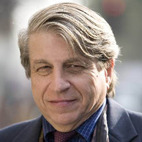
Benjamin Barber on “If Mayors Ruled the World”
TICKETS
Tuesday June 5, 02012 at 7:30pm Cowell Theater at Fort Mason
Long Now Members can reserve 2 seats, join today! • General Tickets $10
About this Seminar:
Democracy began in cities and works best in cities. Mayors are the most pragmatic and effective of all political leaders because they have to get things done. “The paramount aims of city-dwellers,” says Barber, “concern collecting garbage and collecting art rather than collecting votes or collecting foreign allies, the supply of water rather than the supply of arms, promoting cooperation rather than promoting exceptionalism, fostering education and culture rather than fostering national defense and patriotism.”
Most of humanity now lives in cities, and cities worldwide connect with each other more readily than any other political entity. By expanding on that capability, Barber suggests, “Cities can make themselves global guarantors of social justice and equality against the depredations of fractious states. And they can become, as the polis once was, new incubators of democracy, this time in a global form.“
A much-honored political theorist, Barber is author of Strong Democracy: Participatory Politics for a New Age and of Jihad vs. McWorld: How Globalism and Tribalism Are Reshaping the World.

May 9, 2012
Freinkel Seminar Primer
Tuesday May 22, 02012 at the Cowell Theater, San Francisco
Susan Freinkel has used both chestnuts and toothbrushes as stand-ins for American culture’s relationship with the environment and technology. Her two well-received books of science journalism serve, in some ways, as foils to one another. The first, American Chestnut: The Life, Death and Rebirth of a Perfect Tree, is a study of how we lost something great, while the more recent Plastic: A Toxic Love Story explores how we’ve found ourselves overly-dependent on something that isn’t the cure-all we’d hoped. Fortunately, both books also delve into what’s next: how we may get the American Chestnut back and how we can mitigate some of the more damaging effects of plastic.
The American Chestnut was all but lost early last century to a blight that nearly cleared the eastern part of the United States of the species. As it was an important source of timber and nuts, the loss of the Chestnut was a significant blow to the American economy. Freinkel’s book on the subject explores these effects as well as the recent proliferation of efforts to revive the species through a range of techniques, both high- and low-tech.
 In exploring our relationship with plastic, Freinkel is careful to point out that it has many legitimate benefits to offer us as a material; problems arise however, when we treat it primarily as disposable. In a New York Times Op-Ed published last year, she explains that around half the plastic produced each year goes into single-use products, which not only significantly undervalues the time and energy that are required to produce those hydrocarbon molecules, but ignores how long they’ll last as well.
In exploring our relationship with plastic, Freinkel is careful to point out that it has many legitimate benefits to offer us as a material; problems arise however, when we treat it primarily as disposable. In a New York Times Op-Ed published last year, she explains that around half the plastic produced each year goes into single-use products, which not only significantly undervalues the time and energy that are required to produce those hydrocarbon molecules, but ignores how long they’ll last as well.
In an interview on NPR’s Fresh Air, she discusses the health concerns around the many different types of plastic, the sometimes-murky science supporting and refuting those concerns, and the complicated regulatory environment governing those debates. She’s also written a couple of articles for Fast Company, one recently exploring the costs and benefits of burning used plastic for energy.
Susan Freinkel will weave these many threads together on Tuesday, May 22nd at the Cowell Theater. You can reserve tickets, get directions and sign up for the podcast on the Seminar page.
Subscribe to the Seminars About Long-term Thinking podcast for more thought-provoking programs.

Stewart Brand's Blog
- Stewart Brand's profile
- 291 followers


